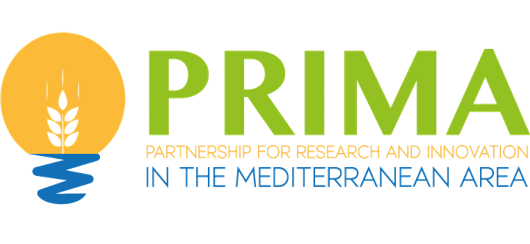Abstract: The carbon footprint and energy cost of irrigation are increasing due to the modernization of irrigation systems, which also necessitates highly efficient use of water resources. Alternatives to conventional energy sources to power irrigation systems are renewable sources, primarily photovoltaic energy. Photovoltaic energy has the main disadvantage of producing a highly variable amount of energy, which affects the irrigation uniformity. Modeling irrigation systems in an integrated manner generates useful information about system performance for technicians that helps in the decision-making process. The EVASOR (EVAluation of SOlar iRrigation systems) model integrates different modules to simulate the whole solar irrigation system using a holistic approach: 1) I-Solar, which simulates the instantaneous power generated by the photovoltaic system, 2) ASSolar, which simulates the variable speed pumping system, 3) Solar-Net, which simulates the hydraulic performance of the water distribution network, and 4) PRESUD-Irregular, which determines the discharge and pressure of all the emitters of the subunits together with irrigation quality parameters (coefficient of uniformity (CU), emission uniformity (EU), and coefficient ofvariation of the emitter discharge in the subunit (CVq) for any pressure at the subunit inlet. The integrated model EVASOR determines the irrigation quality parameters of complex irrigation systems with information on irradiance, air temperature, wind speed, and water table level for any combination of open subunits. To validate the model, results are presented regarding a case study located in southeast Spain.
Abstract: A growing international human population and rising living standards are increasing the demand for agricultural products. Under higher pressure over natural resources, environmentalconcerns are increasing as well, challenging current water use decision-making processes in irrigated agriculture. Higher agricultural productivity means water should be applied more effciently, which requires instant information on weather, soil, and plant conditions throughout the growing season. An information-based irrigation scheduling application tightened to the spatiotemporal variability of the fields is critical for enhancing the current irrigation system and making better irrigation scheduling decisions. The aim of this study is to review current irrigation scheduling methodologies based on two case studies (woody and field crops) located in semi-arid areas of Southeast Spain. We realize that optimal irrigation programming requires consistent investment in equipment, expenditure on operation and maintenance, and qualified technical and maintenance services. These technological approaches will be worthwhile in farms with low water availability, high profitability, and significant technical-economic capacity.
Keywords: water profitability; water scarcity; sensors; big data; information and communication technologies; irrigation scheduling
Abstract: Downscaling techniques over a solution to the lack of high-resolution satellite Thermal InfraRed (TIR) data and can bridge the gap until operational TIR missions accomplishing spatio-temporal requirements are available. These techniques are generally based on the Visible Near InfraRed (VNIR)-TIR variable relations at a coarse spatial resolution, and the assumption that the relationship between spectral bands is independent of the spatial resolution. In this work, we adopted a previous downscaling method and introduced some adjustments to the original formulation to improve the model performance. Maps of Land Surface Temperature (LST) with 10-m spatial resolution were obtained as output from the combination of MODIS/Sentinel-2 images. An experiment was conducted in an agricultural area located in the Barrax test site, Spain (39°03'035” N, 2°06' W), for the summer of 2018. Ground measurements of LST transects collocated with the MODIS overpasses were used for a robust local validation of the downscaling approach. Data from 6 different dates were available, covering a variety of croplands and surface conditions, with LST values ranging 300–325 K. Diferences within ±4.0 K were observed between measured and modeled temperatures, with an average estimation error of ±2.2 K and a systematic deviation of 0.2 K for the full grounddataset. A further cross-validation of the disaggregated 10-m LST products was conducted using an additional set of Landsat-7/ETM+ images. A similar uncertainty of ±2.0 K was obtained as an average. These results are encouraging for the adaptation of this methodology to the tandem Sentinel-3/Sentinel-2, and are promising since the 10-m pixel size, together with the 3–5 days revisit frequency of Sentinel-2 satellites can fulfill the LST input requirements of the surface energy balance methods for a variety of hydrological, climatological or agricultural applications. However, certain limitations to capture the variability of extreme LST, or in recently sprinkler irrigated fields, claim the necessity to explore the implementation of soil moisture or vegetation indices sensitive to soil water content as inputs in the downscaling approach. The ground LST dataset introduced in this paper will be of great value for further refinements and assessments.
Keywords: Downscaling; thermal infrared; land surface temperature; disaggregation; Copernicus
ABSTRACT : In a drip-irrigated vineyard soil evaporation (E) can reach up to 30-40% of the seasonal grapevine crop evapotranspiration (ETc). Vineyard soil management can be used as a technique to reduce soil E for improving crop water use efficiency. The aim of this experiment was to analyze the effect of using pruning waste as an organic mulching on vineyard ETc. During three experimental seasons, several cycles of grapevines water use determinations were conducted using a large weighing lysimeter located in Albacete (southeast Spain) under drip irrigation. Measurements were carried out under different soil management practices: i) keeping the bare soil within the lysimeter during the first 2-3 days (bare soil), ii) covering the lysimeter soil surface with pruning waste as an organic mulching (about 5 cm thick) for the next 2-3 days (organic mulch), and iii) covering the lysimeter with a waterproof canvas (plastic mulch), similar in colour to the soil, for the last 2-3 days of each measurement cycle. In 2017, the measurements period was initiated when midday stem water potential (Ψstem) values reached -1.3 MPa, in order to study the effect of the different soil management on grapevine ETc when vines in the lysimeter were suffering from severe water stress. During the 3-year study, plant determinations (i.e., canopy cover and the phenological stage) showed that vines were at the same stage of development during each period of measurements. Under equal evaporative demand and fractional canopy cover, results showed a reduction in the vineyard ETc between 16-18% with the organic mulching, and up to 24-30% with the plastic mulching. Even though plastic mulches significantly reduced water evaporation from soil surface, this reduction could have resulted in an increase in crop transpiration (T). However, results in this experiment show that both organic and inorganic mulching did not increase vine T compared to no mulching conditions, based on vine T values estimated during the three experimental periods of 2015. Therefore, using pruning waste as an organic mulch could be an environmental friendly alternative to reduce soil evaporation and increase crop water productivity in large areas where vineyards are drip-irrigated.
Keywords: Weighing lysimeter; Soil evaporation; Vine transpiration; Water use; Organic mulch; Plastic mulch
Link to the article : Click here
ABSTRACT : Canola is a water-stress tolerant crop, which could be an alternative in areas with limited water resources. However, in arid and semi-arid environments where rainfall events are scarce and increasingly erratic, the use of irrigation is necessary for canola production to reach its maximum yield. The goal of this study was to determine the crop evapotranspiration (ETc) and crop coefficients of sprinkler irrigated canola (Brassica napus L.) under non-limiting soil water content conditions. A 2-year field experiment was conducted in the lysimeter facility located in Albacete (SE Spain). A large weighing lysimeter (2.7 × 2.3 × 1.7 m), with an accuracy of 0.04 mm equivalent water depth, was used to measure the daily crop evapotranspiration (ETc) rate throughout two growing seasons. ETc values were determined using daily mass change in the lysimeter. Cumulative ETc was replaced in the lysimeter through sprinkler irrigation applications, thus crop water stress was avoided. Seasonal lysimeter based (measured) canola ETc was 472 and 602 mm in 2008 and 2012, respectively. The 28 % higher ETc value in 2012 was mainly due to a much higher evaporative demand during the crop growth mid-season period of 2012. The Kc values were determined using grass reference evapotranspiration (ETo) calculated with the FAO56 Penman-Monteith equation and the ETc calculations from the lysimeter data. The dual crop coefficient approach was used to separate crop transpiration (Kcb) from soil evaporation (Ke). For the two canola seasons, mid-season Kc and Kcb values, after FAO56 climate adjustment, were Kc mid (std) = 1.15 and Kcb mid (std) = 1.11. Those values were reached coinciding with maximum fraction of ground cover (fc) values of up 0.95 and 0.97 for 2008 and 2012, respectively. The seasonal evaporation component for sprinkler-irrigated canola was estimated to be about 24 % and 19 % of ETc in 2008 and 2012, respectively. The good linear relationship found between canola Kcb values and fc and the excellent agreement found between remotely sensed vegetation indices (VIs) and different biophysical parameters, such as Kcb and fc, will allow monitoring and estimating the spatially distributed water requirements of canola at field and regional scales using multispectral satellite imagery.
Keywords: ET partitioning; Single and dual crop coefficient; Standard climate; Canopy cover; Vegetation indices; FAO56 approach
Link to the article : Click here

